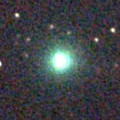
|
It brightened very rapidly. Now it is very bright as 8.9 mag (Sept. 11, Chris Wyatt). It stays bright as 8-9 mag until October. The condition is bad in this apparition. In the Southern Hemisphere, it stays observable after this while the comet will be fading. But it stays locating low. It is not observable after this in the Northern Hemisphere.
Date(TT) R.A. (2000) Decl. Delta r Elong. m1 Best Time(A, h)
Sept.18 9 51.42 -11 38.0 1.812 1.076 30 8.5 4:20 (282, -3)
Sept.25 10 15.20 -17 9.5 1.828 1.113 31 8.5 4:25 (288, -5)
|
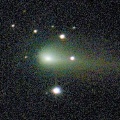
|
Now it is 10.7 mag (Sept. 16, Osamu Miyazaki). It stays observable at 10-11 mag in excellent condition from summer to autumn.
Date(TT) R.A. (2000) Decl. Delta r Elong. m1 Best Time(A, h)
Sept.18 5 33.17 17 42.5 1.248 1.622 91 10.4 4:20 (306, 64)
Sept.25 5 49.21 16 58.3 1.207 1.627 94 10.3 4:25 (315, 66)
|
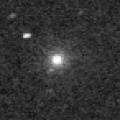
|
It was observed at 9-10 mag from late July to early August. Now it is not observable. It will appear in the morning sky in December, but it will be fainter than 15 mag at that time.
Date(TT) R.A. (2000) Decl. Delta r Elong. m1 Best Time(A, h)
Sept.18 12 2.43 10 45.9 2.002 1.029 10 10.6 19:27 (109, -9)
Sept.25 12 27.22 6 59.2 2.091 1.113 9 11.1 19:17 (105, -9)
|
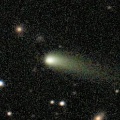
|
Now it is 11.5 mag (Sept. 16, Osamu Miyazaki). It will brighten up to 9 mag, and will be observable in good condition in winter.
Date(TT) R.A. (2000) Decl. Delta r Elong. m1 Best Time(A, h)
Sept.18 4 4.21 17 57.1 0.574 1.334 112 11.1 4:16 ( 0, 73)
Sept.25 4 32.89 19 53.1 0.531 1.300 112 10.7 4:17 ( 0, 75)
|
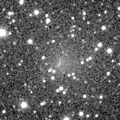
|
Now it is bright as 12.5 mag (Aug. 31, Chris Wyatt). It will brighten very rapidly, and it will be observable at 10 mag in good condition from October to December. In the Northern Hemisphere, it locates somewhat low at the high light.
Date(TT) R.A. (2000) Decl. Delta r Elong. m1 Best Time(A, h)
Sept.18 17 58.26 -22 29.0 0.832 1.355 94 11.2 19:27 ( 20, 30)
Sept.25 18 21.88 -25 20.3 0.862 1.357 93 10.9 19:17 ( 18, 27)
|
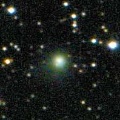
|
Now it is 10.8 mag (Sept. 16, Osamu Miyazaki). It will brighten up to 10 mag in winter. In the Northern Hemisphere, it stays observable in good condition for a long time. In the Southern Hemisphere, it is not observable until November.
Date(TT) R.A. (2000) Decl. Delta r Elong. m1 Best Time(A, h)
Sept.18 7 17.35 44 10.9 3.893 3.702 71 11.0 4:20 (241, 53)
Sept.25 7 24.54 43 36.9 3.786 3.685 76 10.9 4:25 (242, 57)
|
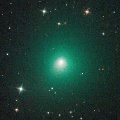
|
Now it is very bright as 10.9 mag (Sept. 8, Chris Wyatt). It will be fading after this. In the Northern Hemisphere, it will be getting lower gradually in the evening. In the Southern Hemisphere, it stays observable in good condition for a while.
Date(TT) R.A. (2000) Decl. Delta r Elong. m1 Best Time(A, h)
Sept.18 15 50.44 -20 41.0 2.442 2.212 64 11.5 19:27 ( 49, 16)
Sept.25 16 4.61 -22 32.3 2.538 2.243 61 11.7 19:17 ( 49, 14)
|
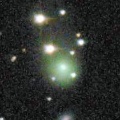
|
Now it is 12.2 mag (Sept. 4, Juan Jose Gonzalez). It is expected to be observable at 5-6 mag for a long time from 2022 to 2023. In the Northern Hemisphere, it is not observable at the high light from 2022 autumn to 2023 summer. In the Southern Hemisphere, it stays low for a while. But it will be observable in good condition at the high light.
Date(TT) R.A. (2000) Decl. Delta r Elong. m1 Best Time(A, h)
Sept.18 16 57.15 29 5.2 5.409 5.316 79 11.9 19:27 ( 88, 60)
Sept.25 16 58.25 27 38.6 5.421 5.255 75 11.9 19:17 ( 88, 56)
|
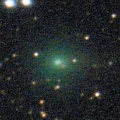
|
It brightened very rapidly up to 10.7 mag in July (July 20, Osamu Miyazaki). Now it is fading. It has already faded down to 13.5 mag (Sept. 4, Sandor Szabo). It stays observable in the morning sky for a long time.
Date(TT) R.A. (2000) Decl. Delta r Elong. m1 Best Time(A, h)
Sept.18 7 39.32 26 48.0 1.479 1.360 63 12.2 4:20 (265, 44)
Sept.25 7 55.79 26 35.8 1.492 1.422 66 12.7 4:25 (268, 48)
|
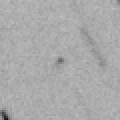
|
Now it is 14.6 mag (Sept. 11, Chris Wyatt). It will brighten rapidly up to 9 mag in winter. It will be observable in good condition. In the Southern Hemisphere, it is observable in excellent condition. In the Northren Hemisphere, it is not observable until November.
Date(TT) R.A. (2000) Decl. Delta r Elong. m1 Best Time(A, h)
Sept.18 23 48.89 -58 34.1 1.270 2.007 123 13.6 0:03 ( 0, -3)
Sept.25 23 38.05 -58 54.4 1.249 1.955 120 13.3 23:19 ( 0, -4)
|
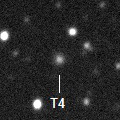
|
Now it is 14.6 mag (July 12, Chris Wyatt). It is expected to brighten up to 11.5 mag in 2022. In the Southern Hemisphere, it stas observable in good condition for a long time, although it becomes extremely low temporarily from August to September. In the Northern Hemisphere, it is not observable until November.
Date(TT) R.A. (2000) Decl. Delta r Elong. m1 Best Time(A, h)
Sept.18 10 28.08 -23 23.3 5.602 4.769 31 13.5 4:20 (287,-17)
Sept.25 10 35.87 -23 44.4 5.566 4.744 31 13.4 4:25 (290,-13)
|
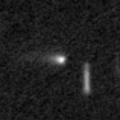
|
Now it is 13.9 mag (Sept. 9, Michael Jager). It will approach to Earth down to 0.2 a.u. in December, and it is expected to brighten up to 4 mag. In the Northern Hemisphere, it stays observable in good condition for a long time until December while the comet is brightening gradually, although it becomes extremely low temporarily in September. In the Southern Hemisphere, it is not observable until mid December.
Date(TT) R.A. (2000) Decl. Delta r Elong. m1 Best Time(A, h)
Sept.18 11 7.41 39 13.1 2.740 2.045 38 13.8 4:20 (230, 11)
Sept.25 11 13.28 38 23.6 2.586 1.944 41 13.5 4:25 (234, 15)
|
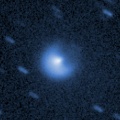
|
Now it is visible visually at 14.8 mag (Sept. 11, Chris Wyatt).
Date(TT) R.A. (2000) Decl. Delta r Elong. m1 Best Time(A, h)
Sept.18 4 56.43 31 36.1 5.680 5.914 98 13.6 4:20 (284, 79)
Sept.25 4 57.41 31 45.8 5.575 5.916 105 13.5 4:25 (310, 85)
|

|
Now it is 13.8 mag (Sept. 8, Chris Wyatt). It will be unobservable soon. However, it will be observable again at 14 mag in November in the Northern Hemisphere, or in January in the Southern Hemisphere.
Date(TT) R.A. (2000) Decl. Delta r Elong. m1 Best Time(A, h)
Sept.18 13 49.26 -3 35.2 4.453 3.644 32 13.7 19:27 ( 82, 5)
Sept.25 13 51.99 -3 15.2 4.540 3.669 26 13.7 19:17 ( 85, 2)
|
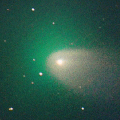
|
It brightened up to 9.7 mag in June (June 4, Michael Jager). Now it is fading. It has already faded down to 14.1 mag (Sept. 11, Chris Wyatt). In the Southern Hemisphere, it stays observable in excellent condition for a long time. In the Northern Hemisphere, it becomes extremely low after this.
Date(TT) R.A. (2000) Decl. Delta r Elong. m1 Best Time(A, h)
Sept.18 23 27.03 -50 16.5 0.976 1.807 131 13.9 23:36 ( 0, 5)
Sept.25 23 21.55 -48 53.4 1.055 1.861 129 14.3 23:03 ( 0, 6)
|
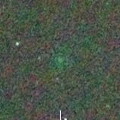
|
It brightened up to 4 mag in major outburst in 2016. In this apparition, it brightened up to 10.5 mag in early August (Aug. 8, Rob Kaufman). Now it is fading rapidly. It has already faded down to 14.0 mag (Aug. 31, Chris Wyatt). In the Southern Hemisphere, it stays locating low in the evening sky until October. In the Northern Hemisphere, it stays locating extremely low.
Date(TT) R.A. (2000) Decl. Delta r Elong. m1 Best Time(A, h)
Sept.18 14 20.07 -7 48.9 1.959 1.365 40 14.3 19:27 ( 74, 8)
Sept.25 14 44.55 -9 26.8 2.035 1.424 40 14.9 19:17 ( 72, 9)
|

|
Now it is 14.5 mag (Aug. 10, Chris Wyatt). It stays 13-14 mag from 2020 to 2021. It will be observable in good condition after this in the Southern Hemisphere. It locates low in the Northern Hemisphere.
Date(TT) R.A. (2000) Decl. Delta r Elong. m1 Best Time(A, h)
Sept.18 18 51.92 -35 16.3 2.645 3.069 105 14.6 19:27 ( 5, 20)
Sept.25 18 56.83 -35 4.6 2.749 3.082 99 14.7 19:17 ( 8, 19)
|
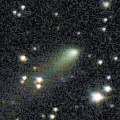
|
Now it is 14.6 mag (Sept. 8, Chris Wyatt). It stays 14 mag until October, and it is observable in good condition. It locates somewhat low in the Southern Hemisphere.
Date(TT) R.A. (2000) Decl. Delta r Elong. m1 Best Time(A, h)
Sept.18 16 19.91 22 56.7 2.430 2.297 70 14.7 19:27 ( 85, 50)
Sept.25 16 14.59 21 41.0 2.543 2.296 64 14.7 19:17 ( 87, 45)
|
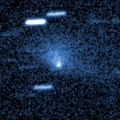
|
It brightened up to 10.1 mag in spring (Apr. 10, Marco Goiato). Now it is fading. It has already faded down to 14.7 mag (Sept. 3, Michael Jager). It stays observable in good condition for a long time after this while the comet will fading.
Date(TT) R.A. (2000) Decl. Delta r Elong. m1 Best Time(A, h)
Sept.18 4 52.14 8 4.7 1.779 2.217 101 14.7 4:20 (336, 61)
Sept.25 4 54.66 7 42.6 1.741 2.261 107 14.8 4:25 (352, 63)
|

|
Now it is 14.8 mag (Sept. 11, Chris Wyatt). It stays 14-15 mag until the end of 2021. In the Southern Hemisphere, it stays observable in good condition for a long time. It locates low in the Northern Hemisphere.
Date(TT) R.A. (2000) Decl. Delta r Elong. m1 Best Time(A, h)
Sept.18 22 47.21 -31 17.1 3.684 4.568 147 14.7 22:57 ( 0, 24)
Sept.25 22 41.55 -30 29.3 3.747 4.586 142 14.8 22:23 ( 0, 25)
|
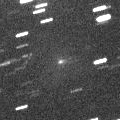
|
Bright new periodic comet. Now it is 13.9 mag (Sept. 15, Michael Jager). It stays observable in good condition for a long time. It stays 15 mag until November. Juan Jose Gonzalez reported it is very bright as 11.5 mag on Sept. 5.
Date(TT) R.A. (2000) Decl. Delta r Elong. m1 Best Time(A, h)
Sept.18 8 1.85 17 42.8 1.495 1.253 56 14.9 4:20 (272, 35)
Sept.25 8 24.80 15 30.8 1.496 1.271 57 14.9 4:25 (276, 36)
|

|
Now it is 14.8 mag (Sept. 11, Chris Wyatt). It was expected to brighten up to 13 mag from spring to summer. But actually, it is fainter than originally expected. It stays 14-15 mag until early autumn. In the Southern Hemisphere, it stays observable in good condition for a long time. In the Northern Hemisphere, it is not observable until July in 2022.
Date(TT) R.A. (2000) Decl. Delta r Elong. m1 Best Time(A, h)
Sept.18 20 43.63 -82 48.5 3.420 3.681 97 15.0 20:57 ( 0,-28)
Sept.25 20 50.06 -81 21.3 3.472 3.696 94 15.1 20:35 ( 0,-26)
|

|
Now it is 15.2 mag (Sept. 8, Chris Wyatt). It stays at 14-15 mag for a long time from 2021 to 2022. It stays observable in good condition after this while brightening gradually.
Date(TT) R.A. (2000) Decl. Delta r Elong. m1 Best Time(A, h)
Sept.18 16 20.55 -16 36.4 5.238 5.006 71 15.1 19:27 ( 47, 24)
Sept.25 16 21.00 -17 30.8 5.349 5.002 64 15.1 19:17 ( 49, 20)
|
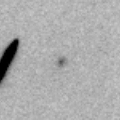
|
Now it is 14.1 mag (Sept. 15, Michael Jager). It stays 15 mag until November. It will be observable in excellent condition in the Northern Hemisphere. It locates somewhat low in the Southern Hemisphere.
Date(TT) R.A. (2000) Decl. Delta r Elong. m1 Best Time(A, h)
Sept.18 5 44.56 23 8.2 1.349 1.662 88 15.2 4:20 (293, 66)
Sept.25 6 0.72 24 11.4 1.302 1.667 91 15.1 4:25 (296, 69)
|
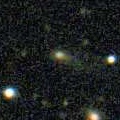
|
Now it is 15.6 mag (Sept. 5, Michael Jager). It is observable at 14-15 mag in excellent condition in autumn.
Date(TT) R.A. (2000) Decl. Delta r Elong. m1 Best Time(A, h)
Sept.18 0 25.01 1 19.3 0.784 1.780 168 15.4 0:38 ( 0, 56)
Sept.25 0 24.20 0 21.7 0.758 1.760 175 15.2 0:10 ( 0, 56)
|
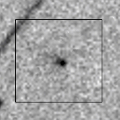
|
Now it is not observable. In the Southern Hemisphere, it will appear in the morning sky at 11 mag in late January, then it stays observable at 11 mag until June. In the Northern Hemisphere, it will appear in the morning sky in December, but it stays locating extremely low for a long time.
Date(TT) R.A. (2000) Decl. Delta r Elong. m1 Best Time(A, h)
Sept.18 12 46.33 -1 24.8 3.253 2.307 16 15.5 19:27 ( 93, -7)
Sept.25 12 58.90 -2 44.9 3.230 2.265 13 15.3 19:17 ( 92, -9)
|
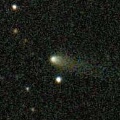
|
Now it is 14.8 mag (Sept. 9, Toshihiko Ikemura, Hirohisa Sato). It stays 15 mag until October, and it is observable in good condition.
Date(TT) R.A. (2000) Decl. Delta r Elong. m1 Best Time(A, h)
Sept.18 23 9.15 -14 40.0 1.311 2.296 164 15.3 23:19 ( 0, 40)
Sept.25 23 6.21 -15 36.4 1.337 2.297 157 15.4 22:48 ( 0, 39)
|
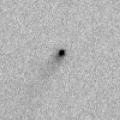
|
Now it is 15.9 mag (Aug. 27, Toshihiko Ikemura, Hirohisa Sato). It stays 15 mag until September. In the Northern Hemisphere, it stays observable in good condition for a long time. In the Southern Hemisphere, it will be getting lower gradually after this.
Date(TT) R.A. (2000) Decl. Delta r Elong. m1 Best Time(A, h)
Sept.18 6 44.96 27 41.5 1.483 1.562 75 15.5 4:20 (271, 56)
Sept.25 7 4.51 28 59.1 1.451 1.579 77 15.6 4:25 (271, 59)
|

|
Now it is 16.0 mag (Aug. 16, iTelescope Observatory, Siding Spring). It is expected to brighten up to 13 mag in 2022. In the Southern Hemisphere, it stays observable in good condition for a long time, although it becomes extremely low temporarily from September to October. In the Northern Hemisphere, it is not observable for a while.
Date(TT) R.A. (2000) Decl. Delta r Elong. m1 Best Time(A, h)
Sept.18 12 15.30 -27 4.1 4.896 4.059 30 15.5 19:27 ( 74,-27)
Sept.25 12 18.47 -28 7.0 4.881 4.019 27 15.5 19:17 ( 75,-30)
|

|
Now it is 15.7 mag (Aug. 30, Thomas Lehmann). It will brighten up to 13 mag in 2022. In 2021, it is observable at 14-15 mag in good condition.
Date(TT) R.A. (2000) Decl. Delta r Elong. m1 Best Time(A, h)
Sept.18 14 9.48 -11 13.4 4.071 3.350 39 15.5 19:27 ( 73, 4)
Sept.25 14 18.06 -12 8.5 4.115 3.337 34 15.5 19:17 ( 74, 2)
|
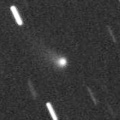
|
Now it is 15.6 mag (Sept. 2, Thomas Lehmann). In the Northern Hemisphere, it stays observable at 15-16 mag for a long time from spring to early 2022. In the Southern Hemisphere, it is not observable until the end of 2021.
Date(TT) R.A. (2000) Decl. Delta r Elong. m1 Best Time(A, h)
Sept.18 12 45.71 33 26.0 3.788 3.018 34 15.6 19:27 (122, 13)
Sept.25 12 49.64 31 26.5 3.808 3.026 33 15.6 19:17 (122, 9)
|
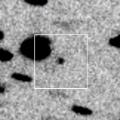
|
It will brighten up to 12 mag from winter to spring. Now it is not observable. In the Northern Hemisphere, it will appear in the morning sky at 14 mag in November. In the Southern Hemisphere, it is not observable until January.
Date(TT) R.A. (2000) Decl. Delta r Elong. m1 Best Time(A, h)
Sept.18 11 30.25 10 58.9 3.166 2.181 9 15.8 4:20 (249,-10)
Sept.25 11 44.16 9 26.1 3.114 2.141 11 15.6 4:25 (253, -7)
|
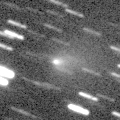
|
Outburst occured in early August. Now it is 15.0 mag (Sept. 3, Thomas Lehmann). In the Northern Hemisphere, it stays observable in good condition. In the Southern Hemipsphere, it stays locating extremely low after this.
Date(TT) R.A. (2000) Decl. Delta r Elong. m1 Best Time(A, h)
Sept.18 5 38.69 43 51.8 2.410 2.598 89 15.6 4:20 (237, 70)
Sept.25 5 46.03 44 35.3 2.354 2.626 94 15.8 4:25 (228, 74)
|
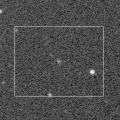
|
Now it is 16.4 mag (Aug. 20, Thomas Lehmann). It will brighten up to 12.5 mag in 2022 summer. In the Southern Hemisphere, it stays observable in excellent condition for a long time. In the Northern Hemisphere, it is not observable until August in 2022.
Date(TT) R.A. (2000) Decl. Delta r Elong. m1 Best Time(A, h)
Sept.18 3 41.09 -68 9.3 4.232 4.558 102 15.7 3:53 ( 0,-13)
Sept.25 3 27.54 -70 21.1 4.199 4.511 101 15.7 3:12 ( 0,-15)
|
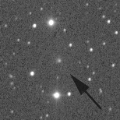
|
It brightened up to 14.2 mag in early summer (June 10, Thomas Lehmann). Now it is not observable. It will be fading after this. In the Northern Hemisphere, it will appear in the morning sky at 16 mag in October. In the Southern Hemisphere, it will never be observable again.
Date(TT) R.A. (2000) Decl. Delta r Elong. m1 Best Time(A, h)
Sept.18 11 36.70 22 21.8 3.032 2.120 20 15.7 4:20 (239, -4)
Sept.25 11 51.66 23 16.1 3.026 2.152 24 15.7 4:25 (241, 0)
|
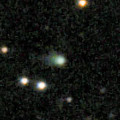
|
Now it is 15.9 mag (Aug. 29, Toshihiko Ikemura, Hirohisa Sato). It is expected to brighten up to 11 mag in 2023. In the Northern Hemisphere, it stays observable in good condition for a long time. It locates extremely low in the Southern Hemisphere.
Date(TT) R.A. (2000) Decl. Delta r Elong. m1 Best Time(A, h)
Sept.18 16 5.70 39 34.4 6.254 5.993 70 15.9 19:27 (111, 52)
Sept.25 16 5.46 38 28.6 6.265 5.949 67 15.9 19:17 (111, 49)
|
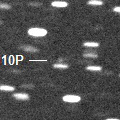
|
Now it is 16.7 mag (Aug. 29, Toshihiko Ikemura, Hirohisa Sato). It will brightens rapidly. And it will be observable at 15 mag in excellent condition in winter.
Date(TT) R.A. (2000) Decl. Delta r Elong. m1 Best Time(A, h)
Sept.18 7 22.62 26 1.5 2.684 2.463 66 16.1 4:20 (268, 47)
Sept.25 7 34.11 25 22.8 2.602 2.460 70 16.0 4:25 (272, 52)
|
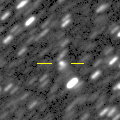
|
Now it is 15.7 mag (Sept. 9, Toshihiko Ikemura, Hirohisa Sato). It stays observable at 15-16 mag in good condition until autumn.
Date(TT) R.A. (2000) Decl. Delta r Elong. m1 Best Time(A, h)
Sept.18 16 37.10 -10 4.9 5.036 4.865 74 16.1 19:27 ( 48, 31)
Sept.25 16 40.24 -9 37.2 5.143 4.867 68 16.1 19:17 ( 51, 29)
|
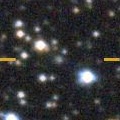
|
Now it is 15.6 mag (Sept. 3, Sandor Szabo). It is expected to brighten up to 11 mag from spring to summer in 2022. In the Southen Hemisphere, it locates somewhat low in 2021, but it will be observable in good condition at the high light for a long time. In the Northern Hemisphere, it is observable in good condition in 2021, but it will not be observable at the high light.
Date(TT) R.A. (2000) Decl. Delta r Elong. m1 Best Time(A, h)
Sept.18 18 43.46 20 48.3 3.250 3.622 103 16.1 19:27 ( 30, 74)
Sept.25 18 39.74 18 18.9 3.276 3.558 98 16.1 19:17 ( 39, 69)
|
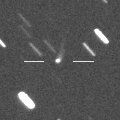
|
It was expected to brighten up to 14.5 mag from spring to summer. But actually, it is fainter than expected. Now it is 17.7 mag (July 4, Mount John Observatory, Lake Tekapo). In the Southern Hemisphere, it stays observable in excellent condition for a long time. In the Northern Hemisphere, it is not observable after this.
Date(TT) R.A. (2000) Decl. Delta r Elong. m1 Best Time(A, h)
Sept.18 11 2.69 -52 35.8 3.527 3.067 55 16.1 4:20 (314,-35)
Sept.25 11 12.31 -52 8.0 3.608 3.103 52 16.2 4:25 (315,-32)
|

|
It brightened up to 11.6 mag in winter (Feb. 18, Thomas Lehmann). Now it is fading. It has already faded down to 15.4 mag (Aug. 20, Thomas Lehmann). In the Southern Hemisphere, it stays observable in good condition after this. In the Northern Hemisphere, it will never be observable after this.
Date(TT) R.A. (2000) Decl. Delta r Elong. m1 Best Time(A, h)
Sept.18 4 57.75 -66 54.1 3.599 3.839 96 16.2 4:20 (355,-12)
Sept.25 4 41.94 -68 12.1 3.652 3.904 97 16.3 4:25 ( 0,-13)
|
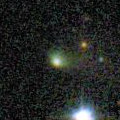
|
Now it is 15.3 mag (Sept. 9, Sandor Szabo). It will be fading after this, and it will be fainter than 18 mag in November.
Date(TT) R.A. (2000) Decl. Delta r Elong. m1 Best Time(A, h)
Sept.18 1 13.26 -11 28.5 1.877 2.822 155 16.3 1:27 ( 0, 44)
Sept.25 1 10.68 -12 24.3 1.892 2.853 159 16.4 0:57 ( 0, 43)
|
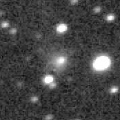
|
Now it is 16.3 mag (Sept. 9, Toshihiko Ikemura, Hirohisa Sato). It is observable at 16 mag from 2020 to 2021. It locates low in the Southern Hemisphere.
Date(TT) R.A. (2000) Decl. Delta r Elong. m1 Best Time(A, h)
Sept.18 21 56.53 38 8.9 5.379 6.109 133 16.3 22:06 (180, 87)
Sept.25 21 50.74 36 40.1 5.401 6.121 132 16.3 21:33 (180, 88)
|
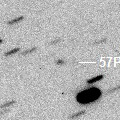
|
Now it is 16.6 mag (Aug. 28, Toshihiko Ikemura, Hirohisa Sato). It stays 16.5 mag until October.
Date(TT) R.A. (2000) Decl. Delta r Elong. m1 Best Time(A, h)
Sept.18 16 51.64 -19 29.0 1.629 1.742 78 16.4 19:27 ( 38, 26)
Sept.25 17 8.43 -20 1.7 1.675 1.733 76 16.4 19:17 ( 38, 25)
|
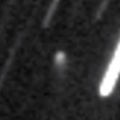
|
Now it is 17.6 mag (Sept. 2, Michael Jager). It will brighten up to 15.5 mag in winter. In the Northern Hemisphere, it stays observable in good condition for a long time. It is not observable at all in the Southern Hemisphere.
Date(TT) R.A. (2000) Decl. Delta r Elong. m1 Best Time(A, h)
Sept.18 15 46.92 67 41.6 3.318 3.254 77 16.4 19:27 (154, 46)
Sept.25 15 41.86 66 26.9 3.299 3.226 77 16.4 19:17 (151, 44)
|
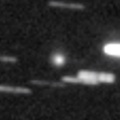
|
Now it is 16.4 mag (Aug. 30, Toshihiko Ikemura, Hirohisa Sato). It is expected to brighten up to 11 mag in 2023. In the Northern Hemisphere, it is observable in good condition in 2021. But it is observable only until November in 2022. In the Southern Hemisphere, it locates extremely low in 2021. But it will be observable in good condition at the high light.
Date(TT) R.A. (2000) Decl. Delta r Elong. m1 Best Time(A, h)
Sept.18 17 25.63 33 30.2 6.195 6.198 85 16.5 19:27 ( 94, 67)
Sept.25 17 26.26 32 8.5 6.212 6.150 81 16.4 19:17 ( 93, 63)
|
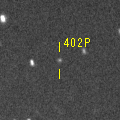
|
First return of a new periodic comet observed at 16 mag from 2003 to 2004. Now it is 17.4 mag (Aug. 27, J. L. Virlichie, P. Traverse). It will brighten up to 16 mag in winter, and it will be observable in excellent condition.
Date(TT) R.A. (2000) Decl. Delta r Elong. m1 Best Time(A, h)
Sept.18 6 24.23 1 50.1 4.031 3.970 79 16.5 4:20 (308, 44)
Sept.25 6 28.75 1 38.7 3.933 3.965 84 16.5 4:25 (317, 48)
|
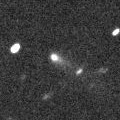
|
Now it is 16.3 mag (Sept. 1, ATLAS-HKO, Haleakala). It stays observable at 16.5 mag in good condition until October.
Date(TT) R.A. (2000) Decl. Delta r Elong. m1 Best Time(A, h)
Sept.18 23 9.70 0 45.6 1.176 2.175 171 16.5 23:19 ( 0, 56)
Sept.25 23 4.49 1 0.1 1.197 2.180 164 16.5 22:46 ( 0, 56)
|
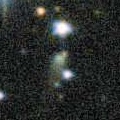
|
Now it is 15.8 mag (Sept. 3, Sandor Szabo). It stays at 16-17 mag from 2020 to 2021. In the Northern Hemisphere, it stays observable in good condition for a long time. It locates extremely low in the Southern Hemisphere.
Date(TT) R.A. (2000) Decl. Delta r Elong. m1 Best Time(A, h)
Sept.18 18 21.85 49 55.3 8.748 8.891 94 16.6 19:27 (150, 72)
Sept.25 18 20.45 49 30.7 8.791 8.896 92 16.6 19:17 (143, 70)
|
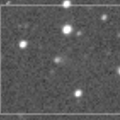
|
First return of a new periodic comet which brightened up to 17 mag in 2006. Now it is 16.3 mag (Aug. 19, J. Drummond). It stays 16.5-17 mag from 2021 to 2022.
Date(TT) R.A. (2000) Decl. Delta r Elong. m1 Best Time(A, h)
Sept.18 21 35.07 -66 24.7 2.698 3.211 111 16.8 21:45 ( 0,-11)
Sept.25 21 31.37 -65 1.7 2.736 3.199 108 16.8 21:14 ( 0,-10)
|
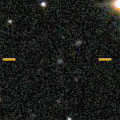
|
Now it is 18.2 mag (Sept. 9, Toshihiko Ikemura, Hirohisa Sato). It will brightens rapidly. And it is expected to be observable at 12-13 mag in good condition from December to February.
Date(TT) R.A. (2000) Decl. Delta r Elong. m1 Best Time(A, h)
Sept.18 22 2.77 -3 0.7 0.825 1.788 155 17.1 22:12 ( 0, 52)
Sept.25 21 54.76 -4 17.8 0.800 1.728 146 16.8 21:37 ( 0, 51)
|
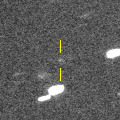
|
Now it is 17.0 mag (Sept. 9, Toshihiko Ikemura, Hirohisa Sato). It stays observable at 17 mag from autumn to winter. In the Northern Hemisphere, it stays observable in good condition. In the Southern Hemisphere, it stays extremely low until November.
Date(TT) R.A. (2000) Decl. Delta r Elong. m1 Best Time(A, h)
Sept.18 9 1.56 23 1.1 2.363 1.785 44 16.9 4:20 (259, 26)
Sept.25 9 20.09 21 26.7 2.318 1.780 46 16.8 4:25 (262, 28)
|
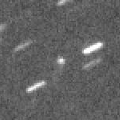
|
Now it is 17.7 mag (Sept. 1, D. Buczynski). It will brighten up to 16 mag in 2022. In the Northern Hemisphere, it stays observable in good condition for a long time. In the Southern Hemisphere, it is not observable until 2023.
Date(TT) R.A. (2000) Decl. Delta r Elong. m1 Best Time(A, h)
Sept.18 8 33.43 52 49.1 4.575 4.231 63 17.1 4:20 (227, 41)
Sept.25 8 41.93 54 13.1 4.455 4.204 69 17.0 4:25 (226, 45)
|
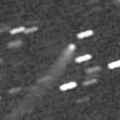
|
Now it is 16.9 mag (Aug. 29, Toshihiko Ikemura, Hirohisa Sato). Fading slowly. In the Northern Hemisphere, it stays observable in good condition for a long time. It is not observable after this in the Southern Hemisphere.
Date(TT) R.A. (2000) Decl. Delta r Elong. m1 Best Time(A, h)
Sept.18 16 13.64 51 0.6 5.947 5.765 74 17.0 19:27 (130, 54)
Sept.25 16 13.61 50 18.0 6.013 5.799 72 17.1 19:17 (129, 51)
|
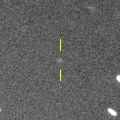
|
Now it is 16.9 mag (Aug. 28, ATLAS-HKO, Haleakala). It continues brightening even after the perihelion passage. It stays observable at 17 mag in good condition for a while.
Date(TT) R.A. (2000) Decl. Delta r Elong. m1 Best Time(A, h)
Sept.18 5 8.07 -11 46.4 3.355 3.644 98 17.1 4:20 (340, 41)
Sept.25 5 10.25 -12 27.9 3.292 3.661 103 17.0 4:25 (350, 42)
|

|
Now it is 16.5 mag (Sept. 3, Thomas Lehmann). In the Northern Hemisphere, it stays observable for a long time while it is getting fainter slowly. In the Southern Hemisphere, it will never be observable again.
Date(TT) R.A. (2000) Decl. Delta r Elong. m1 Best Time(A, h)
Sept.18 13 53.87 45 57.6 7.304 6.741 52 17.0 19:27 (127, 30)
Sept.25 13 57.99 45 5.3 7.361 6.790 52 17.1 19:17 (127, 28)
|

|
Peculiar asteroid moving along a cometary orbit. It brightens up to 17 mag from September to October. In the Northern Hemisphere, it is observable in excellent condition. It is not observable in the Southern Hemisphere.
Date(TT) R.A. (2000) Decl. Delta r Elong. m1 Best Time(A, h)
Sept.18 8 36.64 60 13.9 0.470 0.937 68 17.1 4:20 (218, 41)
Sept.25 8 33.81 74 34.8 0.522 1.061 81 17.1 4:25 (198, 42)
|

|
Now it is 17.7 mag (May 12, ATLAS-HKO, Haleakala). It brightened rapidly. It stays 17 mag for a long time from 2021 to 2022. In the Southern Hemisphere, it stays observable in good condition for a long time. In the Northern Hemisphere, it will be observable only in extremely low sky from autumn to winter.
Date(TT) R.A. (2000) Decl. Delta r Elong. m1 Best Time(A, h)
Sept.18 9 1.99 -20 59.6 6.008 5.349 45 17.1 4:20 (296, 0)
Sept.25 9 4.22 -22 20.3 5.944 5.345 49 17.1 4:25 (302, 5)
|
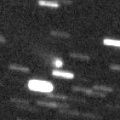
|
Now it is 16.9 mag (Aug. 21, ATLAS-MLO, Mauna Loa). It is fading slowly after this.
Date(TT) R.A. (2000) Decl. Delta r Elong. m1 Best Time(A, h)
Sept.18 15 9.21 -24 0.5 5.753 5.268 56 17.1 19:27 ( 54, 7)
Sept.25 15 10.09 -24 30.5 5.879 5.294 50 17.2 19:17 ( 56, 4)
|
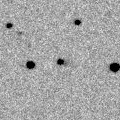
|
Now it is 16.9 mag (Aug. 25, ATLAS-HKO, Haleakala). It is observable at 17 mag in good condition in autumn.
Date(TT) R.A. (2000) Decl. Delta r Elong. m1 Best Time(A, h)
Sept.18 2 31.50 18 21.5 3.049 3.812 133 17.2 2:45 ( 0, 73)
Sept.25 2 30.49 18 1.4 2.979 3.808 140 17.2 2:16 ( 0, 73)
|
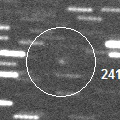
|
Now it is 17.3 mag (Aug. 28, Toshihiko Ikemura, Hirohisa Sato). In the Northern Hemisphere, it stays observable at 17 mag in good condition until winter. In the Southern Hemisphere, it stays locating extremely low for a while.
Date(TT) R.A. (2000) Decl. Delta r Elong. m1 Best Time(A, h)
Sept.18 7 43.25 34 27.2 2.209 1.987 64 17.2 4:20 (254, 46)
Sept.25 7 58.64 33 27.0 2.165 2.006 67 17.2 4:25 (258, 49)
|

|
Now it is 17.7 mag (Sept. 9, Toshihiko Ikemura, Hirohisa Sato). It will be fading slowly.
Date(TT) R.A. (2000) Decl. Delta r Elong. m1 Best Time(A, h)
Sept.18 16 52.17 -10 40.4 8.213 8.068 78 17.2 19:27 ( 44, 33)
Sept.25 16 52.01 -10 37.3 8.358 8.096 71 17.3 19:17 ( 48, 30)
|
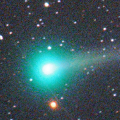
|
It brightened up to 3 mag in December in the SOHO spacecraft images (Dec. 18, Hirohisa Sato). Now it is 17.0 mag (Aug. 29, ATLAS-HKO, Haleakala). It stays observable in good condition after this while the comet will be fading.
Date(TT) R.A. (2000) Decl. Delta r Elong. m1 Best Time(A, h)
Sept.18 23 33.62 16 53.9 3.364 4.326 161 17.2 23:43 ( 0, 72)
Sept.25 23 27.77 16 3.2 3.439 4.403 161 17.4 23:09 ( 0, 71)
|
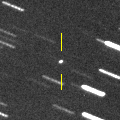
|
Now it is 16.9 mag (Aug. 25, M. Jaeger, E. Prosperi, S. Prosperi). In the Northern Hemisphere, it stays observable in good condition after this while the comet will be fading. In the Southern Hemisphere, it stays locating extremely low for a long time.
Date(TT) R.A. (2000) Decl. Delta r Elong. m1 Best Time(A, h)
Sept.18 5 19.77 38 18.1 2.391 2.643 93 17.3 4:20 (252, 75)
Sept.25 5 23.77 39 3.1 2.356 2.699 98 17.3 4:25 (242, 80)
|
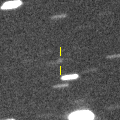
|
Now it is 17.4 mag (Aug. 28, Toshihiko Ikemura, Hirohisa Sato). It will brighten up to 15.5 mag, and will be observable in excellent condition in winter.
Date(TT) R.A. (2000) Decl. Delta r Elong. m1 Best Time(A, h)
Sept.18 8 25.73 17 36.6 2.530 2.044 50 17.5 4:20 (269, 30)
Sept.25 8 41.64 16 52.4 2.464 2.034 53 17.4 4:25 (272, 34)
|

|
It stays 17 mag for a long time from 2021 to 2022. It is observable in excellent condition in the Northern Hemisphere, It locates somewhat low in the Southern Hemisphere.
Date(TT) R.A. (2000) Decl. Delta r Elong. m1 Best Time(A, h)
Sept.18 5 31.52 32 59.0 5.449 5.559 91 17.6 4:20 (270, 72)
Sept.25 5 27.44 33 17.7 5.306 5.545 98 17.5 4:25 (276, 80)
|

|
Now it is 17.0 mag (Aug. 26, J. Drummond). It will brighten up to 16.5-17 mag in winter. In its last apparition in 2015, it brightened up to 13 mag.
Date(TT) R.A. (2000) Decl. Delta r Elong. m1 Best Time(A, h)
Sept.18 21 53.39 -32 31.2 1.454 2.318 140 17.7 22:03 ( 0, 23)
Sept.25 21 48.88 -32 56.0 1.469 2.276 133 17.6 21:31 ( 0, 22)
|
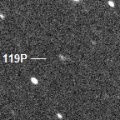
|
Now it is 17.9 mag (Aug. 28, ATLAS-HKO, Haleakala). It will brighten up to 15 mag in 2022 winter. In 2021, it stays observable in good condition while the comet will be brightening gradually. It is fainter than this ephemeris recently.
Date(TT) R.A. (2000) Decl. Delta r Elong. m1 Best Time(A, h)
Sept.18 22 36.11 -18 18.4 2.195 3.145 157 17.7 22:46 ( 0, 37)
Sept.25 22 31.72 -18 42.7 2.212 3.119 149 17.6 22:14 ( 0, 36)
|
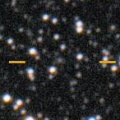
|
Now it is 17.4 mag (Sept. 9, Toshihiko Ikemura, Hirohisa Sato). It stays observable at 17-18 mag for a long time from 2021 to 2022.
Date(TT) R.A. (2000) Decl. Delta r Elong. m1 Best Time(A, h)
Sept.18 19 6.30 -18 58.1 3.638 4.101 110 17.6 19:27 ( 3, 36)
Sept.25 19 8.45 -18 59.3 3.732 4.096 104 17.7 19:17 ( 7, 36)
|
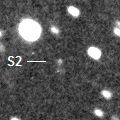
|
First return of a new periodic comet which brightened up to 17 mag in 2012. Now it is 18.1 mag (Aug. 29, ATLAS-MLO, Mauna Loa). In the Southern Hemisphere, it is observable at 17.5 mag in excellent condition in summer. It locates low in the Northern Hemisphere.
Date(TT) R.A. (2000) Decl. Delta r Elong. m1 Best Time(A, h)
Sept.18 19 49.24 -39 10.5 0.714 1.462 115 17.6 20:01 ( 0, 16)
Sept.25 20 1.01 -37 52.9 0.719 1.434 111 17.7 19:45 ( 0, 17)
|
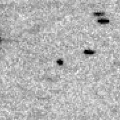
|
Now it is 18.2 mag (Sept. 7, Katsumi Yoshimoto). It is expected to brighten up to 4.5 mag in 2022 April. However, it is not observable at the high light. In the Northern Hemisphere, it stays observable until early February when it brightens up to 14 mag. Then it will appear at 6 mag in mid May, and it stays observable in good condition after that while the comet will be fading. In the Southern Hemisphere, it stays observable until December when it brightens up to 16 mag. But after that, it is not observable until 2022 August.
Date(TT) R.A. (2000) Decl. Delta r Elong. m1 Best Time(A, h)
Sept.18 22 39.94 25 4.2 2.786 3.684 149 17.9 22:49 ( 0, 80)
Sept.25 22 31.80 23 47.9 2.713 3.599 147 17.7 22:13 ( 0, 79)
|
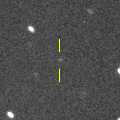
|
Now it is 18.2 mag (Aug. 28, Toshihiko Ikemura, Hirohisa Sato). It has passed the perihelion in 2020 October. At the discovery in 2005, it stayed bright for several years even after the perihelion passage. In this apparition, it may stay observable at 18 mag from 2021 to 2024.
Date(TT) R.A. (2000) Decl. Delta r Elong. m1 Best Time(A, h)
Sept.18 23 30.37 -29 14.2 3.042 3.961 152 17.7 23:40 ( 0, 26)
Sept.25 23 26.58 -29 27.7 3.094 3.982 148 17.8 23:08 ( 0, 26)
|

|
Now it is 19.0 mag (Aug. 25, B. T. Bolin, Z. T. F. Collaboration). It will brighten rapidly, and it will be observable at 13.5 mag in good condition from winter to spring.
Date(TT) R.A. (2000) Decl. Delta r Elong. m1 Best Time(A, h)
Sept.18 8 26.35 22 20.6 3.458 2.941 51 17.9 4:20 (264, 33)
Sept.25 8 36.63 21 48.9 3.356 2.915 55 17.7 4:25 (268, 37)
|

|
It had been observed as 8-9 mag for a long time in 2020. Now it is fading. It has already faded down to 18.3 mag (Aug. 19, J. Drummond). It will be observable in good condition after this in the Southern Hemisphere. It locates extremely low after this in the Northern Hemisphere.
Date(TT) R.A. (2000) Decl. Delta r Elong. m1 Best Time(A, h)
Sept.18 16 16.68 -45 8.1 5.902 5.754 76 17.8 19:27 ( 30, 0)
Sept.25 16 20.41 -45 8.5 6.062 5.814 71 17.9 19:17 ( 32, -1)
|
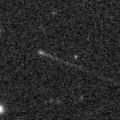
|
Now it is 18.2 mag (Sept. 8, Michael Jager). Main-belt asteroid, but it has a long tail of 10 arcmin (Sept. 4, Michael Jager). It stays observable in good condition until winter.
Date(TT) R.A. (2000) Decl. Delta r Elong. m1 Best Time(A, h)
Sept.18 23 55.84 -0 27.4 1.461 2.465 176 19.0 0:10 ( 0, 55)
Sept.25 23 50.60 -1 1.7 1.473 2.474 175 19.0 23:32 ( 0, 54)
|
|
![]()
 C/2020 F7 ( Lemmon )
C/2020 F7 ( Lemmon ) C/2017 Y2 ( PanSTARRS )
C/2017 Y2 ( PanSTARRS ) P/2021 N2 ( Fuls )
P/2021 N2 ( Fuls ) 241P/LINEAR
241P/LINEAR C/2017 U7 ( PanSTARRS )
C/2017 U7 ( PanSTARRS ) C/2020 S3 ( Erasmus )
C/2020 S3 ( Erasmus ) 28P/Neujmin 1
28P/Neujmin 1 70P/Kojima
70P/Kojima C/2020 U4 ( PanSTARRS )
C/2020 U4 ( PanSTARRS ) 230P/LINEAR
230P/LINEAR 119P/Parker-Hartley
119P/Parker-Hartley 395P/2020 H1 ( Catalina-NEAT )
395P/2020 H1 ( Catalina-NEAT ) 424P/2021 L5 ( La Sagra )
424P/2021 L5 ( La Sagra ) C/2021 O3 ( PanSTARRS )
C/2021 O3 ( PanSTARRS ) 378P/2019 E2 ( McNaught )
378P/2019 E2 ( McNaught ) 116P/Wild 4
116P/Wild 4 C/2017 T2 ( PanSTARRS )
C/2017 T2 ( PanSTARRS ) (248370) 2005 QN173
(248370) 2005 QN173![]()







































































